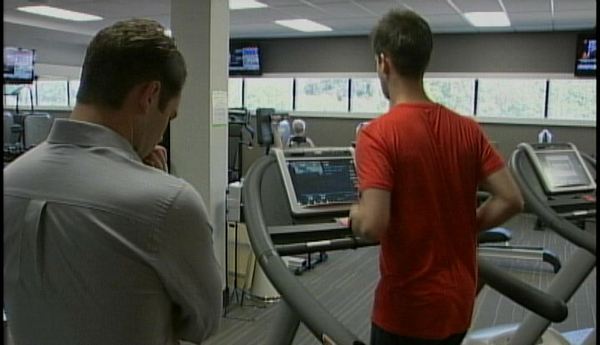
Injury prevention

[projekktor src=’https://488b0f6bbd6e1f02d285-a9990803a5649dd3960d912508d8bce9.ssl.cf2.rackcdn.com/2013-0910-InjuryEN61.mp4′ poster=”]
The running community is gearing up for the fall season and it’s annual series of road races. Distances ranging from 5k to marathons. Training runs can help an athlete prepare. But a professional assessment could prevent injury. Maria Hayes reports.
Doug Eriksen could barely walk when he first came to physio therapist Justin Vanderleest. What began as a twinge of pain gradually worsened over a couple of weeks, sidelining the avid runner. An assessment concluded Eriksen had a slight tear or pull in his achilles tendon.
“For me it wasn’t even during a race. Like I was running around a city working. And I just must have twisted my ankle or something.”
But the injury itself wasn’t a surprise once Vanderleest took a close look at his client in motion. He identified Eriksen’s faulty movement patterns.
“Everybody’s got their own set of impairments. Their own set of inflexibilities, weaknesses, faulty movement patterns, muscle imbalances. Those things are things we can find in our assessment and we can try to correct.”
Eriksen: “I hurt my achilles, but he was able to point out 4 or 5 underlying problems to why it would have happened so easily.”
The trouble is most recreational runners don’t look for imbalances or weaknesses before they hit the pavement. Things that can often be assessed by a personal trainer, chiropractor or physio therapist. They wait until an injury becomes unbearable. And this is the season.
Vanderleest: “The fall races coming up get people out training more. And as we get closer to those races their mileage is picking up. And as their mileage picks up that’s when they’re more likely to have injuries.”
Injuries like shin splints, runners knee, IT band syndrome or achilles tendonitis. And while recovery can take time, six weeks for Eriksen. Treatment can also be used as prevention.
Vanderleest: “There are key muscle groups that get tight when people run a lot. People get tight in their glutes, their hamstring muscles. They get tight in their hip flexors, in the calves. If you did those key stretches on a regular basis you would prevent that inflexibility.”
Along with daily stretching, Vanderleest recommends strengthening exercises, particularly for foot posture and core control.
Eriksen: “So he was able to give me stretches to stretch my hips, strengthen my calf muscles. All these things to prevent it from happening again.”
Another way to prevent injury, especially for runners new to the sport, is to take the guess work out of your training. Physio Therapist Justin Vanderleest says work with a personal trainer or a running club so you progress at a safe pace. Beginners often push themselves too far, too fast. And in the end, that can lead to injury and a significant set back.







